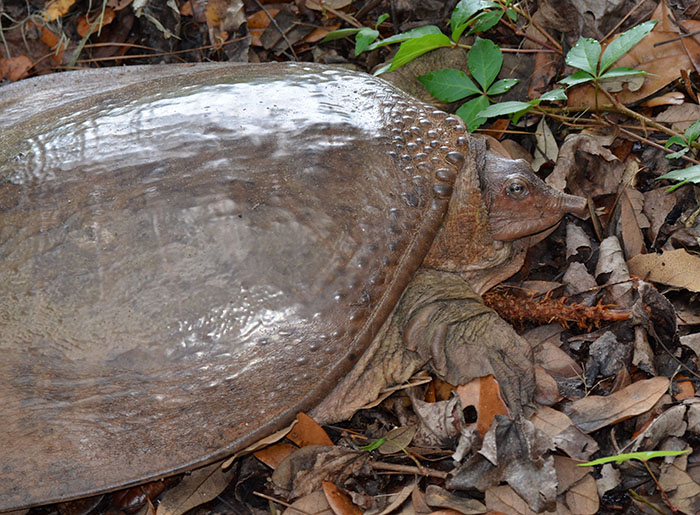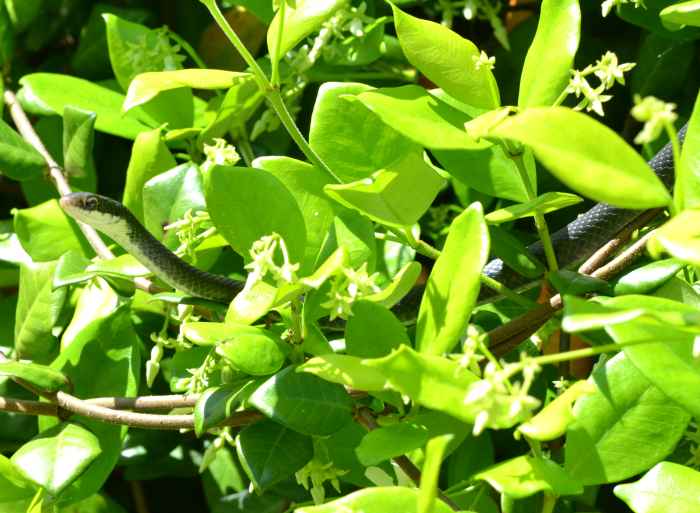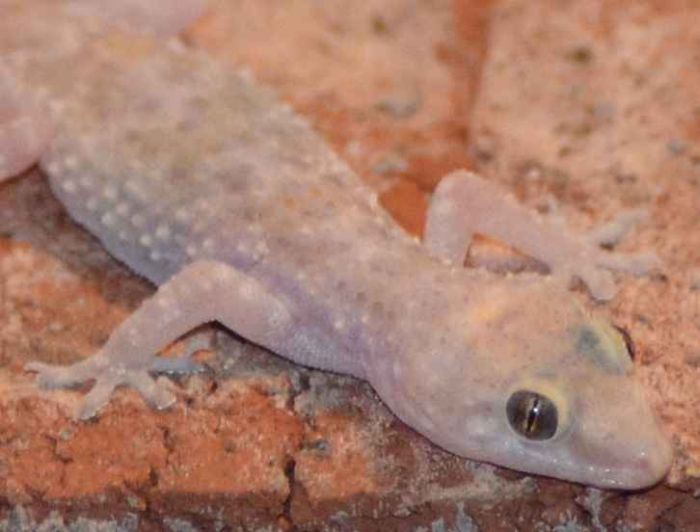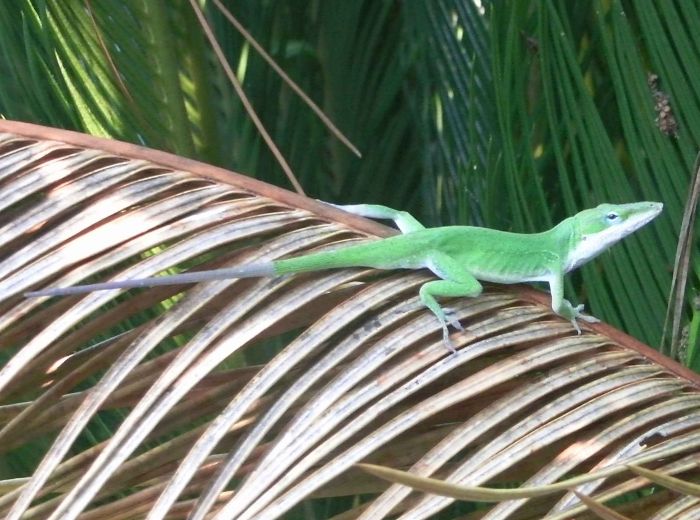 Anolis carolinensis (Green Anole). | We have plenty of these common lizards in our yard and on occasions in our living room which seems to attract
them magically. This is the green anole (Anolis carolinensis). They can drop (and regrow) their tail to evade predators. I wonder whether the darker grayish tail of the left fellow is due to such an event. They also change color to fit the situation. Brown indicates distress. They eat small insects such as moths and crickets. wikipedia: http://en.wikipedia.org/wiki/Carolina_anole wildflorida.com: http://www.wildflorida.com/florida_lizards.php | ||
 Apalone ferox (Florida Softshell Turtle) ♀. | For about four days, this softshell turtle was an uninvited guest in our pool. We tried to lift her out with the pool skimmer, to grab her, elevated the water level, and built a huge wooden bridge out of the pool that she ignored for about three days. Then today I couldn't believe my eyes ... she was suddenly out of the pool at the fence. Thank God! Florida softshell turtles are almost entirely aquatic and prefer to bury themselves in the sandy or muddy substrate. Like all softshells, they are very fast-moving in water and on land. While this species is omnivorous, its diet consists largely of meat, consuming mainly fish, insects, crustaceans, frogs and mollusks. It may also scavenge.
wikipedia: https://en.wikipedia.org/wiki/Florida_softshell_turtle | ||
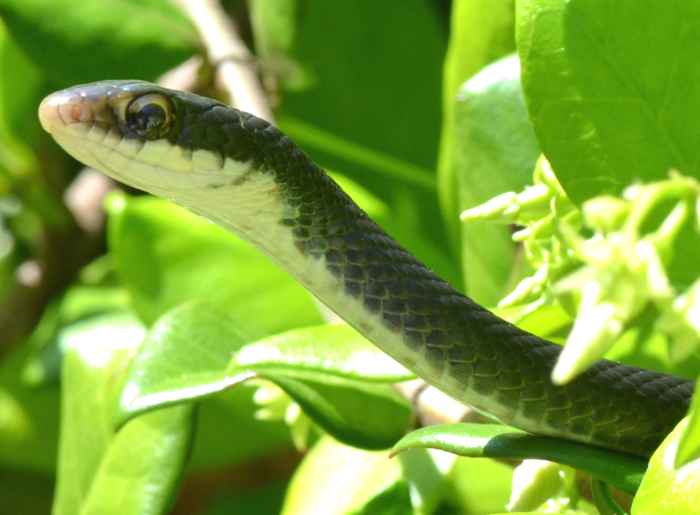 Coluber constrictor priapus (Southern Black Racer). | This snake surprised me while I was looking for insects in my beautiful jasmine-covered trellis. It seems to be a Black Racer (Coluber constrictor priapus). They can reach a length of over 60 inches and feed on rodents, frogs, birds, and lizards. They kill they prey by suffocation or crushing. This snake held itself in the jasmine at a height of approx. 6 ft. and did not move at all.
wikipedia: http://en.wikipedia.org/wiki/Coluber_constrictor_priapus | ||
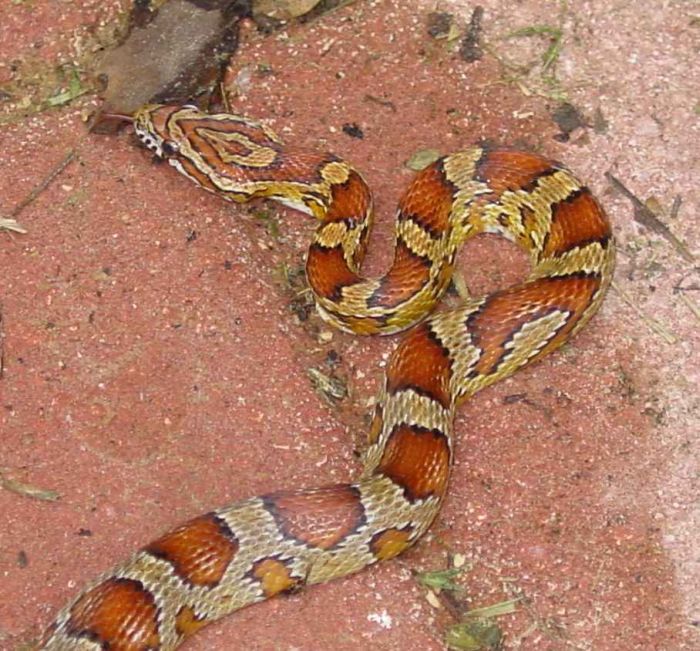 Elaphe guttata (Corn Snake). | I found this one under my garbage can (twice over 12 years). This could be a corn snake (Elaphe guttata). They reach lengths of up to 6' and are not dangerous to humans, but then again doesn't the venomous copperhead look very similar? wikipedia: http://en.wikipedia.org/wiki/Corn_snake | ||
 Eumeces laticeps (Broadheaded Skink). | more later. | ||
 Hemidactylus turcicus (Mediterranean Gecko). | The Mediterranean Gecko has sticky toe pads and vertical pupils. Its skin is bumpy/warty. This introduced old-world species is almost completely nocturnal. It is firmly established in Florida and always found close to human developments. Geckos can make squeaking or barking noises. The small photos were taken on 08/08/11 around 11 pm.
UGA: http://www.uga.edu/srelherp/lizards/hemtur.htm UF: http://www.flmnh.ufl.edu/herpetology/checklist/lizards.htm | ||
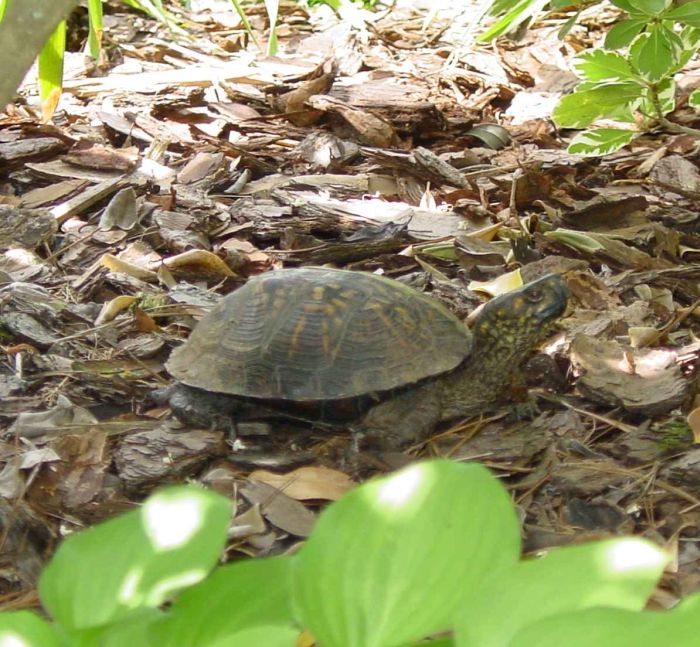 Terrapene carolina. | Another very rare visitor who appears somewhat angry about my intrusion.
More later. | ||
 Trachemys scripta (Yellow-bellied slider). | I believe this turtle is a yellow-bellied slider which is the most common turtle species in the southeastern US and often kept as a pet. I saw this turtle in my pool during fairly heavy rain. I was so excited that it let me come close that I didn't correct my camera settings, hence the fuzziness. After the rain stopped, the turtle didn't give me a second chance and immediately dived to the bottom of the pool whenever I left the house. I had no idea that turtles have such good eyes! The following day, we finally succeeded extracting the very tired looking turtle from the pool and brought it to our lake. wikipedia: https://en.wikipedia.org/wiki/Yellow-bellied_slider UF: https://www.floridamuseum.ufl.edu/herpetology/florida-amphibians-reptiles/turtles/ |

